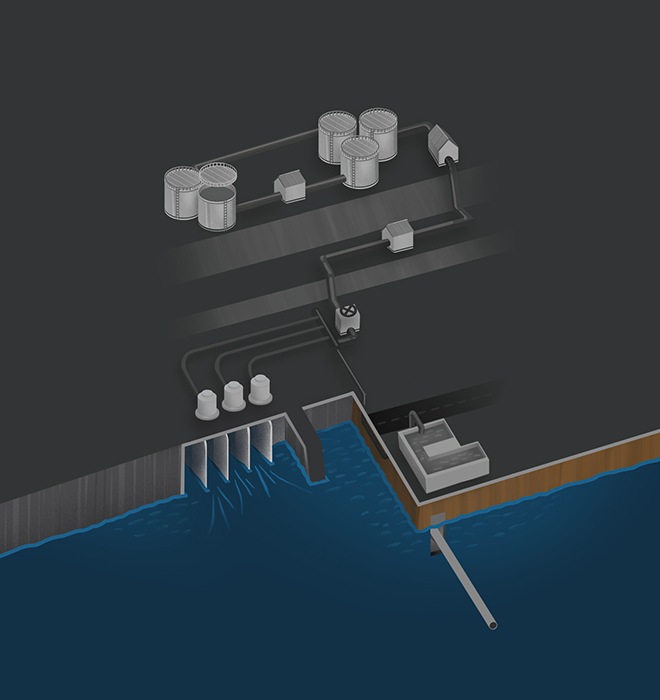Fukushima’s wastewater release
Japan’s largest power company, Tokyo Electric Power Company Holdings Inc (Tepco), is set to dump into the ocean some 1.37 million cubic metres of treated water stored in more than 1,000 tanks after the 2011 Fukushima nuclear accident. The filtering process was able to remove almost all the radioactive agents, but the discharge, which will take about three decades to be completed, has raised concerns in the region.
The move has been approved by the United Nation’s nuclear watchdog, the International Atomic Energy Agency (IAEA), but China’s authorities have said issues remain, such as over the “hasty” release of the safety report, reliability of the purification equipment and the monitoring plan. Hong Kong is seeking to protect its residents by suspending imports of food products from prefectures near the release site.
Location
The release point is 1km off the coast of Fukushima Prefecture in northeast Japan.
Origin of contamination
After the 2011 nuclear plant disaster, large amounts of water were used to cool and stabilise the meltdown of three reactors. The used water, contaminated with high levels of radioactive material, leaked and flooded the tunnels and underground areas of the facilities. It then came into contact with groundwater from the surrounding hills, creating toxic water that has been pumped out and stored in tanks.
They will run out of space in 2024. The annual cost of storage is estimated at US$912 million.
The filtering process
The Advanced Liquid Processing System (ALPS) removes most of the radioactive elements, but the primary contaminant remaining is tritium, a radioactive isotope of hydrogen. Removing tritium from water is possible in laboratories. But given the scale required for Fukushima, the effort comes at an enormous cost.


What is tritium?
Tritium is a radioactive isotope of hydrogen. It is produced naturally from interactions of cosmic rays with gases in the upper atmosphere and is also a by-product of nuclear reactors. Water containing tritium is routinely released from nuclear plants around the world. Tritium is considered to be relatively harmless because it does not emit enough energy to penetrate human skin. But when ingested, it can raise cancer risks according to the Canadian Nuclear Safety Commission.
Amount of Tritium naturally exists in the environment (approximation)
In Bq (Becquerel, a unit used to measure radioactivity)
Tritium is found in a range of common consumer items because it can be used in combination with phosphors to make materials that are self-luminous. These items include exit signs, watch dials and key chains.
What is the weight of
1 trillion Bq of tritium?
Annual Tritium discharge from
nuclear power plants worldwide
Seafood import ban
In 2022, Hong Kong was Japan’s second-largest market for agricultural and fisheries exports, taking in about HK$12.3 billion (US$1.6 billion) worth of goods, or 15.6 per cent of Japan’s total exports. In 2021, Hong Kong was the largest importer of Japan’s seafood products.
Seafood imports from Japan graphics in 2021 (Destination and products)
The Hong Kong government has said that if the treated water is discharged into the ocean, the city will immediately ban imports of food items from the coastal prefectures near the Fukushima plant and impose strict controls on other goods from the rest of Japan. The ban could affect 10 prefectures: Tokyo, Fukushima, Chiba, Tochigi, Ibaraki, Gunma, Miyagi, Niigata, Nagano and Saitama.
Associate Creative Director Marcelo Duhalde
Edited by Francine Chen
Additional research and design by
Ezra Cheung, Katie Yue, Rainbow Pun
Additional web development Yan Jing Tian
Cover illustration by Marcelo Duhalde
Sources: SCMP, International Atomic Energy Agency, Ministry of the Environment Government of Japan, Health Physics Society, Tokyo Electric Power Company Holdings Inc, Japan Ministry of Agriculture, Forestry and Fisheries, Canadian Nuclear Safety Commission